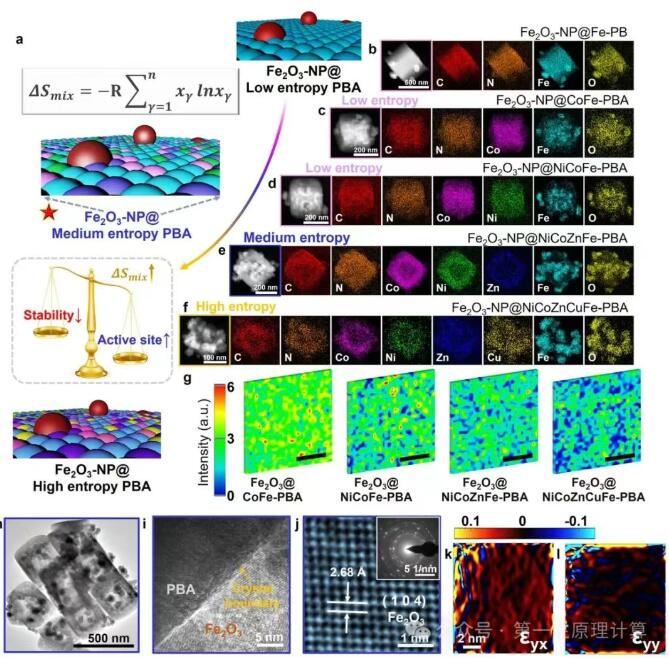
Prussian blue analogs (PBAs) are exemplary precursors for the synthesis of a diverse array of derivatives.Yet, the intricate mechanisms underlying phase transitions in these multifaceted frameworks remain a formidable challenge. In this study, a machine learning-guided analysis of phase transitions in a medium-entropy PBA system is delineated, utilizing an array of descriptors that encompass crystallographic phases, structural subtleties, and fluctuations in multimetal valence states. By integrating multimodal simulations with experimental validation, a thermodynamics-driven phase transformation model for medium-entropy PBA is established and accurately predicted the critical synthesis parameters. A constellation of advanced techniques—including atomic force microscopy coupled with Kelvin probe force microscopy for individual nanoparticles, X-ray absorption spectroscopy, operando ultraviolet-visible spectroscopy, in situ X-ray diffraction, theoretical calculations, and multiphysics simulations—substantiated that the iron oxide@NiCoZnFe-PBA exhibits both exceptional stability and remarkable electrochemical activity. This investigation provides profound insights into the phase transition dynamics of polymetallic complexes and propels the rational design of other thermally-induced derivatives.
Full text available on https://doi.org/10.1002/adma.202503814
